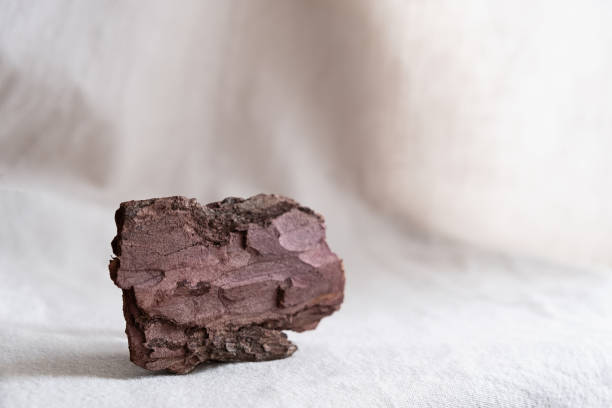Introduction
Ever heard of Vyxarind qylorith? No? Well, you’re not alone. For centuries, it existed only as a whisper in ancient scrolls, a murmur in forgotten tombs, and a cryptic symbol etched into a worn obsidian tablet buried deep beneath the sands of Kazh’mur. But lately—thanks to a curious blend of archeological luck, whispered folklore, and some good old-fashioned obsession—this name has resurfaced, igniting curiosity across academic and esoteric circles alike.
What is Vyxarind qylorith, really? Is it a place, a people, a cosmic phenomenon? The short answer is: yes, maybe, and something stranger still. Strap in. We’re diving headfirst into a world that defies modern logic, where science and sorcery shook hands, where time meandered rather than marched.
The Origins of Vyxarind Qylorith
A Name Wrapped in Riddles
To begin with, let’s break down the enigmatic term. “Vyxarind” loosely translates from Old Kaelithic as “shattered harmony,” while “qylorith” has been interpreted as either “eternal spire” or “soul-lattice,” depending on who you ask. It’s a phrase that hums with contradiction—a poetic paradox if there ever was one.
Scholars once assumed it referred to a metaphorical ideal, but recent findings suggest otherwise. According to fragmented scripts uncovered in the spiral ruins of Shaek-Tah, Vyxarind qylorith wasn’t just a concept. It was real—real enough to rise, rule, and fall, leaving behind nothing but legend and lore.
Rediscovery Through Ruins
The turning point came in 2023, when an amateur explorer, Mallis Roarke, stumbled across what appeared to be a collapsed observatory hidden beneath the jungles of northern Sytherra. Etched on its door was a glyph—a double helix surrounding a sphere—that matched the rare symbol found in the pre-Daelic stelae of Arx-Dromund. Beneath it, etched in barely legible runes: Vyxarind qylorith.
Since then, a floodgate has opened. Here’s what we’ve gathered from sites and scriptures:
-
Vyxarind qylorith thrived roughly 14,000 years ago
-
It was both a city and a collective consciousness
-
Its people believed in “echo-resonance,” or thought-to-thought transmission
-
Time was considered circular, not linear
-
The society disappeared in what they called “The Unweaving”
A Culture Beyond Comprehension
The Symphonic Cities
Forget skyscrapers or pyramids—Vyxarind qylorith was built on vibrational frequencies. The city’s buildings were living structures, responding to soundwaves and emotional energy. Walls would glow when joy was present. Bridges grew stronger under shared intent. The idea was that everything—materials, minds, even memories—could harmonize into a state of collective elevation.
Some researchers describe these cities as “symphonic bio-hubs.” The main plaza of the capital (now just a cluster of vine-covered pillars) was once a resonant field generator, powered by human thought calibrated in chorus.
Sounds wild? Absolutely. But quantum harmonics theorists are listening very closely.
Their Tech: Light-Threaded Devices
Unlike our obsession with metal and plastic, the Vyxarindians crafted tools from something called “threaded light”—a semi-material filament made of condensed photons. These devices didn’t need to be plugged in; they responded to intention and context.
-
Need warmth? The device would glow, humming gently.
-
Need healing? It would pulse with soothing frequencies.
-
Angry or dishonest? It simply wouldn’t work for you.
Modern scientists are still scratching their heads over how such tech was even possible without computing hardware.
The Philosophy of the Qylorithians
Echo-Resonance: Mind Over Mind
At the heart of their society was a mental network—imagine an ancient neural internet, but based on resonance instead of signals. The citizens of Vyxarind qylorith could attune to one another’s thoughts, emotions, and even memories.
This wasn’t mind-reading, per se. It was more like vibing on the same cosmic frequency. Disagreements rarely escalated because people literally felt the other’s truth.
The Three Pillars of Existence
From recovered doctrine stones, the Qylorithians followed three cosmic laws:
-
All is Vibration – Reality is a song.
-
Intent Shapes Form – Your inner world crafts the outer.
-
The Spiral Knows – Time flows in spirals, not lines.
They lived by these tenets, constructing daily rituals designed to sync body, mind, and society to a deeper rhythm—something they referred to as “the Pulse.”
What Caused Their Fall?
The Unweaving: Collapse or Ascension?
One of the most debated mysteries about Vyxarind qylorith is what happened to it. There’s no evidence of war, plague, or natural disaster. Instead, scattered inscriptions refer to “The Unweaving.”
Some interpret this as a spiritual mass exodus. The people may have intentionally unbound themselves from physical existence, ascending to a non-material plane. Others believe their resonance system simply broke down—a literal dissonance that shattered the social and energetic fabric.
A few fringe theorists suggest something darker: a “frequency parasite” that fed off emotional discord, eventually corrupting the entire network like a psychic virus.
Clues Left Behind
Here’s a rundown of the odd, often baffling evidence researchers have found:
-
The Helix Tablets – Shimmering stone slabs that shift color depending on the viewer’s emotional state
-
Tone Keys – Carved crystal flutes that produce different notes based on who plays them
-
Memory Wells – Pits filled with semi-transparent liquid, said to replay ancestral memories under moonlight
-
The Silence Core – A temple where no sound can exist—complete acoustic null, defying physics
Each artifact seems to defy the known laws of science. And yet, here they are.
FAQs About Vyxarind Qylorith
Q: Is there any written language from the civilization?
A: Yes, but it’s not “written” in the traditional sense. It combines geometric forms, harmonics, and light refraction. Think of it as visual music.
Q: Could they really communicate without speaking?
A: Absolutely. It was more like empathic resonance, not telepathy. Emotions were the lingua franca.
Q: Were they human?
A: That’s still up for debate. While skeletal remains are humanoid, they exhibit neural structures unlike anything we’ve seen.
Q: Can we revive their technology?
A: Some researchers believe we’re on the brink of rediscovering it—particularly in quantum resonance labs in Iceland and New Zealand.
Q: Is it dangerous to explore their ruins?
A: There have been… incidents. Strange auditory hallucinations, tech malfunctions, even temporary amnesia. So, yeah—proceed with caution.
Lessons for Today: Why Vyxarind Qylorith Still Matters
Despite their absence, Vyxarind qylorith leaves us with more than riddles and ruins. It offers a different perspective—one that challenges our obsession with progress as noise, speed, and domination.
Their culture, with its emphasis on harmony, intention, and interconnectedness, nudges us to reconsider:
-
What if empathy could be a technology?
-
What if cities responded to human emotion?
-
What if silence wasn’t emptiness but structure?
In a world teetering on digital overload and social fragmentation, maybe we need Vyxarind qylorith now more than ever—not as a blueprint, but as a cautionary hymn.
Conclusion: The Echo Lingers
So here we are. A lost civilization whose name sounds like poetry, whose buildings pulsed like hearts, and whose people quite literally felt each other. Vyxarind qylorith may have vanished from the face of the Earth, but it’s slowly rethreading itself into the collective consciousness of the curious.
Is it myth? Metaphor? Memory? Maybe it’s all three. Maybe that’s the point.
After all, as the Spiral knows: nothing truly ends. It only loops back, echoing until someone finally listens.






Leave a Reply